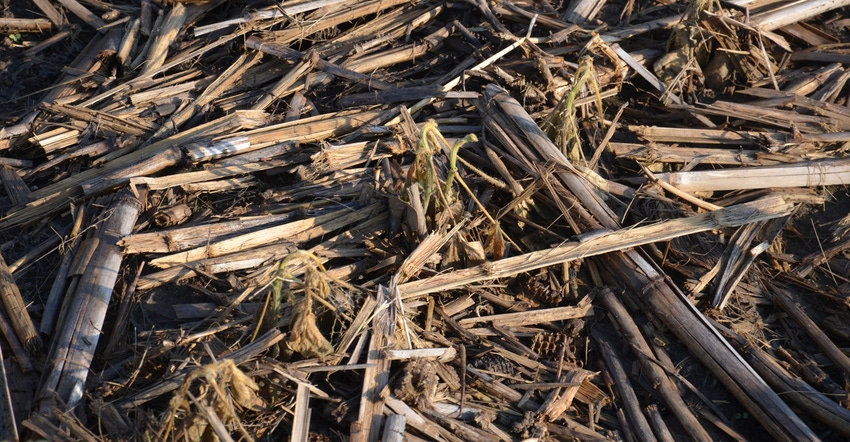
A smart person once said that for every action, there’s a reaction. And for every decision you make, there will be a consequence. Hopefully, it’s what you intended to accomplish. What you want to avoid are unintended consequences.
Don Donovan, a district conservationist with the Natural Resources Conservation Service, believes there are a couple of situations related to cover crops and erosion control that could catch you off-guard. You may think you’re doing the right thing when actually you are either damaging the cover crop or setting yourself up for soil management issues.
Smash covers, too?
Are you one of the many Indiana farmers who use some of the aftermarket cornstalk devastators on your corn head to help break down residue and possibly protect your combine and tractor tires? Donovan warns that if you are, and you also aerially apply cover crops, you may experience some unintended results.
Some farmers across Indiana are finding this equipment can impact young growing cover crops that have been seeded into standing corn before harvest, he says. In some cases, the entire cover crop stand was impacted, and very little cover remained a few weeks after harvest.
If you aerially applied cover crops into corn and have a good stand, you may want to consider using these devastators only in front of your combine tires and not all the way across the header, Donovan suggests. That would lessen the potential negative impact of these aftermarket tools on a young cover crop while still protecting tires.
Vertical tillage and corn
Do you use a vertical-tillage tool to knock down, chop up and level cornstalks after harvest? While many farmers believe vertical-tillage tools speed up the breakdown of cornstalks, there may be reasons to use caution, Donovan says. Once again, there could be an unintended consequence of freeing up cornstalks.
Once stalks are chopped up and no longer attached to the soil, they’re susceptible to movement by water and wind, the conservationist says. A heavy winter rainfall event can cause stalks to move and then accumulate in low areas or in front of road culverts.
You could be talking about a cost to either you or the county highway department to remove them. Donovan says if you use a vertical-tillage tool on stalks, consider less aggressive tillage or turning the tool into a cover crop seeder.
An air seeder can be installed on a vertical-tillage tool at a minimal cost, and can usually be done on your own. You get a cover crop seeded at a low cost, plant a lot of acres in a day and accomplish your original goal of getting the stalk decay process started in the fall, Donovan says.
The new cover crop will grow up through the residue once it emerges, and help hold the residue in place over the winter. Your county highway department will thank you for keeping your residue off the roads and out of culverts.
Editor’s note: The trend, however, seems to be toward more aggressive vertical-tillage tools, not less aggressive ones. Two new models introduced this year are more aggressive than previous models.
About the Author(s)
You May Also Like




